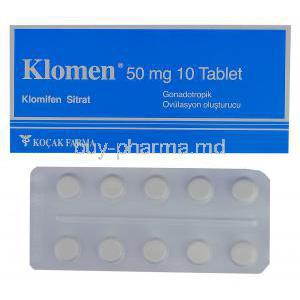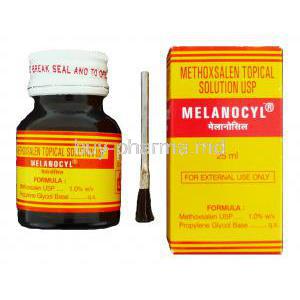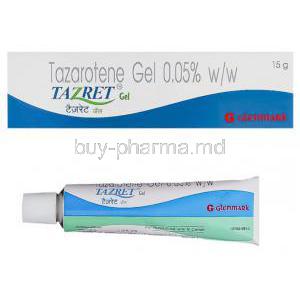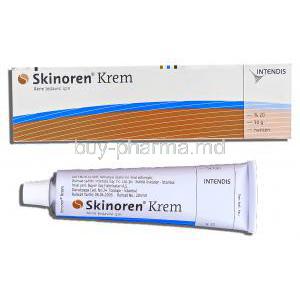Methoxsalen
- I. Introduction
- II. Uses of Methoxsalen
- III. Off-Label Uses of Methoxsalen
- IV. How Methoxsalen Works
- V. Dosage and Administration
- VI. Composition of Methoxsalen
- VII. Side Effects of Methoxsalen
- VIII. Special Precautions with Methoxsalen
- IX. Methoxsalen in Special Populations
- X. Interactions with Methoxsalen
- XI. Contraindications for Methoxsalen Use
- XII. Overdosage of Methoxsalen
- XIII. Storage Requirements for Methoxsalen
- XIV. Warning Label Details for Methoxsalen
- XV. Careful Administration of Methoxsalen
- XVI. Handling Precautions for Methoxsalen
- XVII. Summary and Key Takeaways
I. Introduction
A Brief History of Methoxsalen
Methoxsalen, also called Oxsoralen, has a historical background that can be traced back to ancient Egypt. They used plant extracts containing psoralens to treat skin conditions during that time. In recent times methoxsalen was isolated in the 1930s and subsequently gained significant attention for its therapeutic uses as one of the earliest studied psoralens.
FDA Approval and Indications
Methoxsalen was given the light by the FDA, the regulatory body for food and drugs in the United States, in the 1970s. It is used mainly to treat psoriasis, vitiligo, and Cutaneous T Cell Lymphoma (CTCL), often combined with A (UVA) light therapy.
The Psoralen Class of Drugs
Methoxsalen belongs to a group of drugs called psoralens. Psoralens are naturally occurring compounds in plants that can absorb ultraviolet (UV) light and interact with DNA. These compounds are essential in PUVA (Psoralen plus UVA) therapy, a treatment approach for various skin conditions.
II. Uses of Methoxsalen
Psoriasis Management
Methoxsalen is a medication that is used along with UVA light to treat severe psoriasis by making the skin more sensitive to UVA radiation and slowing down the growth of excess skin cells. This therapy is called PUVA and it reduces inflammation and scales in the skin.
Here are some references:
Methoxsalen - Wikipedia Methoxsalen (Oral Route) Side Effects - Mayo Clinic METHOXSALEN PLUS ULTRAVIOLET A RADIATION - World Health Organization
Treatment of Vitiligo
Vitiligo is a condition that causes the loss of melanocytes, the cells that produce pigment in the skin. Methoxsalen is a type of psoralen that can be used with UVA light to cause damage to the skin cells and stimulate the regeneration of melanocytes. This therapy is called PUVA, and it can help restore pigmentation in some cases of vitiligo.
Here are some references:
methoxsalen (Oxsoralen): Skin Cream Uses, Side Effects & Dosage Vitiligo - Dermatologic Disorders - MSD Manual Professional Edition Plant-Derived Compounds as Promising Therapeutics for Vitiligo
Management of Cutaneous T-Cell Lymphoma (CTCL)
Methoxsalen is a drug that sensitizes the lymphoma cells to being destroyed by UVA light. This therapy is called PUVA, and it is used to treat CTCL, a type of non-Hodgkin lymphoma that affects the skin. PUVA therapy can help reduce the growth of cells and induce remission in some cases of CTCL.
Here are some references:
UVADEX (Methoxsalen) - Food and Drug Administration Cutaneous T-Cell Lymphoma | Treatment Update - CancerCare Frontiers | Skin Directed Therapy in Cutaneous T-Cell Lymphoma
Other FDA Approved Uses
Methoxsalen is a drug that can be used with UVA light therapy to treat eczema, a skin condition that causes inflammation and itching. Methoxsalen can also increase the risk of developing skin cancer, especially if the skin is exposed to excess UVA or sunlight. Therefore, people who use methoxsalen should protect their skin from sun damage and check for any abnormal skin growth.
Here are some references :
Methoxsalen - Wikipedia Methoxsalen Uses, Side Effects & Warnings - Drugs.com Methoxsalen (Oral Route) Side Effects - Mayo Clinic Phototherapy. UVA photo(chemo)therapy | DermNet
III. Off-Label Uses of Methoxsalen
Alopecia Areata
Alopecia areata is a condition that causes hair loss in patches on the scalp or other parts of the body. It is caused by an autoimmune reaction that attacks the hair follicles. Methoxsalen is a drug that can be used with UVA light therapy to treat alopecia areata. Methoxsalen makes the hair follicles more sensitive to UVA light, which may sometimes stimulate hair growth. However, methoxsalen has side effects and risks, such as skin cancer and eye damage.
Here are some references:
Diagnosis of Alopecia and what are its different treatment options? - MSN 5 Best Alopecia Treatments - Healthline Alopecia Areata: Causes, Diagnosis, and Treatment — DermNet
Eczema Treatment
Eczema is a skin condition that causes itching and inflammation. Methoxsalen is a drug that can be used with UVA light therapy to treat some skin disorders, such as psoriasis and vitiligo. However, methoxsalen is not approved by the FDA for treating eczema. Therefore, its use for eczema is considered off-label, meaning a doctor prescribes it for a condition or a dose not officially approved. Off-label use of methoxsalen for eczema may have some benefits, risks, and side effects.
Here are some references:
8-Mop (methoxsalen) dose, indications, adverse effects, interactions … Off-Label Prescribing in Dermatology - Dermatology Advisor A systematic review on the off-label use of montelukast in atopic …
Photodynamic Therapy in Dermatology
Photodynamic therapy (PDT) is a treatment that uses a photosensitizer, such as methoxsalen, in combination with a light source and oxygen to destroy abnormal cells or bacteria. PDT can treat various skin conditions, such as acne and precancerous lesions. PDT works by reducing sebum production and the colonization of acne-causing bacteria and stimulating the immune system and skin regeneration. However, PDT also has some side effects, such as pain, swelling, redness, and sensitivity to light.
Here are some references:
The Role of Photodynamic Therapy in Acne: An Evidence-Based … - Springer Photodynamic Therapy for Acne Vulgaris: Mechanism and … - Springer Photodynamic Therapy Pros and Cons, Side Effects, Recovery - RealSelf
IV. How Methoxsalen Works
Interaction with DNA
Methoxsalen binds with the DNA structure by fitting between the base pairs and creating chemical connections with the pyrimidine bases. When exposed to UVA light, this interaction can cause the DNA strands to link together, blocking the replication process of cells.
Phototoxic Reaction Mechanism
After being taken or applied topically, methoxsalen becomes active when exposed to UVA light. This leads to a reaction in the skin, causing both anti-inflammatory and immunomodulating effects.
Cellular Response to Methoxsalen
Methoxsalen alters how skin cells react to UVA radiation. It helps control the growth of cells in conditions like psoriasis and triggers programmed cell death in cancerous cells in states like CTCL.
V. Dosage and Administration
Recommended Dosage for Various Conditions
The usual initial dosage for psoriasis is between 10 to 70mg taken orally, followed by exposure to UVA light. As for vitiligo, starting doses commonly fall within the range of 10 to 60mg taken orally, along with UVA therapy.
Route of Administration: Oral vs Topical
Methoxsalen can be obtained in two forms; as a medication, topical lotion, or solution. The choice of administration method depends on factors such as the severity and extent of the skin condition, patient preferences, and recommendations from healthcare providers.
Adjusting Dosage: Special Populations and Conditions
The dosage might require some adjustments in patients or individuals with liver or kidney issues. Monitoring the treatment to ensure its effectiveness and minimize any potential side effects is essential.
VI. Composition of Methoxsalen
Active Ingredient: Methoxsalen
Methoxsalen serves as a medicinal component. This compound is a derivative of furanocoumarin. It can absorb long-wave UV radiation.

Inactive Ingredients and Formulations
The inactive components differ depending on whether they're used in oral or topical formulations. Some examples of these components are ethanol, propylene glycol, and polyethylene glycol.
Available Brands and Generics
Oxsoralen-Ultra (per via oral) Uvadex (per via intravenosa) Oxsoralen (tòpic) 8-MOP (per via oral; genèric)
VII. Side Effects of Methoxsalen
Common Side Effects: An Overview
Methoxsalen is usually well tolerated. Like any medication, it can have potential side effects. Some common ones to watch out for are nausea or vomiting, itching or skin rash, and reddening. Fortunately, these side effects are generally mild. Tend to go away as the body adapts to the medication.
Serious Side Effects and Reporting
Although it is uncommon,, serious side effects may arise from taking methoxsalen. These include skin blistering or peeling changes in vision and feelings of depression or anxiety. If any of these occur, it is essential to seek medical attention. Patients should inform their healthcare provider or the FDA MedWatch Program if they experience long-lasting side effects.
Managing Side Effects: Tips and Strategies
To minimize the adverse effects of methoxsalen, carefully follow the guidelines for photosensitivity precautions. Additionally, taking this medication with food or milk is recommended to reduce any discomfort in the system. Lastly, it is advisable to moisturize your skin as a way to minimize dryness and peeling.
VIII. Special Precautions with Methoxsalen
Photosensitivity Precautions
Methoxsalen enhances the skin's responsiveness to sunlight. Patients should take precautions to protect themselves from sun exposure and wear appropriate clothing for coverage. It is advisable to use sunscreens with an SPF that offers broad spectrum protection and sunglasses that absorb UVA rays.
Renal and Hepatic Impairments
Close monitoring is essential for individuals with liver or kidney conditions as is processed by the liver and eliminated through the kidneys. Adjustments to the dosage, might be required in some cases.
Prior History of Skin Cancer
Taking Methoxsalen can potentially raise the likelihood of developing skin cancer. Individuals with a history of skin cancer must undergo monitoring while using this medication.
IX. Methoxsalen in Special Populations
Administration to Elderly Patients
Elderly individuals might exhibit susceptibility to the impacts of methoxsalen particularly in terms of skin cancer risk and liver function. It is crucial to prioritize monitoring in such cases.
Administration to Pregnant Women and Nursing Mothers
Methoxsalen falls under pregnancy Category C, which suggests risks. It should only be used during pregnancy if truly necessary. Nursing mothers should be cautious since it is uncertain whether methoxsalen is excreted in breast milk.
Administration to Children: Safety and Efficacy
The safety and effectiveness of methoxsalen in children have not been definitively established. Therefore it is advisable to use caution and closely monitor its usage in populations.
X. Interactions with Methoxsalen
Drug-Drug Interactions: A Comprehensive List
Methoxsalen can interact with antibiotics like ciprofloxacin and ofloxacin diuretics such as hydrochlorothiazide and other photosensitizing agents, like tetracyclines.

Methoxsalen and Food Interactions
Eating grapefruit and other citrus fruits can raise the levels of methoxsalen in your bloodstream, which could intensify its effects and side effects. It's essential to have a conversation with your healthcare provider about any factors to consider.
Interaction with Sunlight and UV Radiation
The effectiveness of Methoxsalen is connected to how it's activated by UVA light. However, this interaction also makes the skin more sensitive to sunlight which increases the chances of getting sunburned.
XI. Contraindications for Methoxsalen Use
Absolute Contraindications
People with a documented sensitivity to methoxsalen or any ingredient in the formula should avoid using it. It is also not recommended for individuals with conditions that are linked to being sensitive to light.
Relative Contraindications: Risk vs Benefit
When considering methoxsalen, evaluating the advantages and disadvantages is crucial, especially for individuals with a previous diagnosis of melanoma or invasive squamous cell carcinomas.
XII. Overdosage of Methoxsalen
Signs and Symptoms of Overdose
If someone experiences an overdose, they may show signs like; redness and blistering of the skin. Changes, in vision. I am feeling confused.
Management and Treatment of Overdosage
If someone takes much medication, it is crucial to seek medical attention immediately. The main focus of treatment is providing support, which may involve ensuring hydration, offering relief for symptoms, and keeping a close watch on important health indicators.
Prevention Strategies for Overdose
To avoid taking much methoxsalen, it's crucial to follow these steps; 1. Always stick to the dosage as directed by your healthcare provider. 2. Keep the medication safely stored where children cannot access it. 3. Regularly discuss your medication list with your healthcare providers so they can review and update it accordingly. 4. Remember to seek guidance from healthcare before initiating or making any changes to your medication or treatment plan. It's essential to prioritize safety and consult experts when managing medications.
XIII. Storage Requirements for Methoxsalen
Proper Storage Conditions
Store Methoxsalen at room temperature between 20 to 25 degrees Celsius (68 to 77 degrees Fahrenheit). Please keep it in its container, specifically designed to safeguard it from light and moisture after each use, and tightly close the container. It's important not to store it in sunlight or damp and humid places, like bathrooms. Also, ensure that the medication is kept out of reach of children and pets.
Shelf Life and Stability
Methoxsalen has a lifespan after which its effectiveness and safety cannot be assured. The expiration date can be found on the packaging serving as the day when the product is guaranteed to maintain its intended level of effectiveness and safety.
Disposal of Expired or Unused Medication
Disposing of methoxsalen that has expired or is no longer needed in this manner is essential. It should not be flushed down the toilet and poured into a drain. Patients are advised to consult with a pharmacist or a local waste disposal company for guidance, on how to discard their medication.
XIV. Warning Label Details for Methoxsalen
FDA Black Box Warnings
Methoxsalen is accompanied by a box warning issued by the FDA because it can significantly elevate the risk of skin cancer, mainly when used over an extended period. This warning is considered a severe cautionary measure issued by the Food and Drug Administration (FDA).
Additional Warning Labels
It is important to note that there are risks associated with not correctly protecting the eyes during UV treatment sessions, such as the potential development of cataracts. Patients should be informed about the importance of wearing UVA-absorbing sunglasses that wrap around the eyes for a day after methoxsalen treatment.
XV. Careful Administration of Methoxsalen
Health Professional’s Role
Healthcare providers have a role in ensuring accurate methoxsalen dosage and proper supervision during its administration. It is their responsibility to educate patients about the risks and benefits of the treatment and emphasize the significance of taking protective measures against exposure to UV light.
Patient Education and Compliance
It is crucial to prioritize adherence. Patients should receive education on the following aspects; Understanding the significance of taking methoxsalen as instructed. They ensure adequate protection for their skin and eyes from UV light and report any reactions promptly. This ensures that patients are well-informed and actively engaged in their treatment journey.
Monitoring and Follow-Up
Regular follow-up appointments are crucial. These visits enable healthcare professionals to track how patients are responding to treatment, check for any side effects, and make any needed modifications, to the treatment plan.
XVI. Handling Precautions for Methoxsalen
Safe Handling by Healthcare Providers
Healthcare professionals who come into contact with methoxsalen should refrain from touching the medication on their skin. It is essential for them to wear gloves and make sure to wash their hands thoroughly after handling the medication.
Avoiding Contamination and Exposure
It is essential to handle the drug with care to prevent any contamination. It's best to avoid coming into contact with broken capsules. It is not recommended to split or crush the medication.
XVII. Summary and Key Takeaways
Efficacy and Safety Recap
Methoxsalen belongs to the class of medications known as psoralens, and has shown effectiveness in treating conditions such as psoriasis, vitiligo, and Cutaneous T Cell Lymphoma (CTCL). Although effective, it comes with risks, particularly an increased susceptibility to skin cancer and cataracts. These risks are heightened by the exposure to UVA light that activates the medication.
Considerations for Patients and Healthcare Providers
Both patients and healthcare professionals need to consider the advantages and disadvantages of methoxsalen treatment. It is crucial to adhere to the prescribed dosage, follow comprehensive sun protection measures, and attend regular follow-up visits for safe and successful methoxsalen therapy.





















